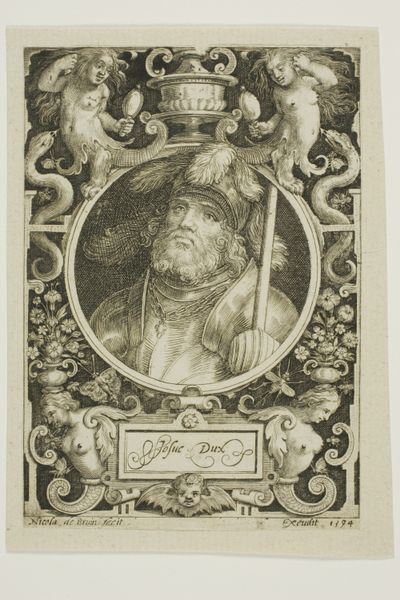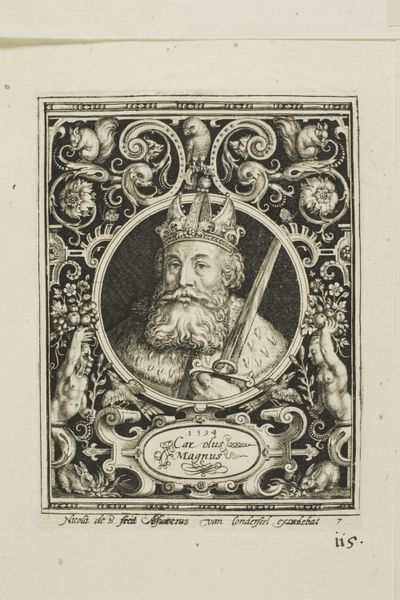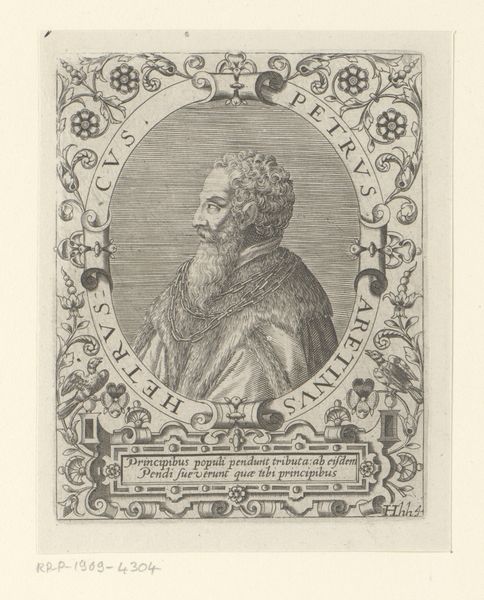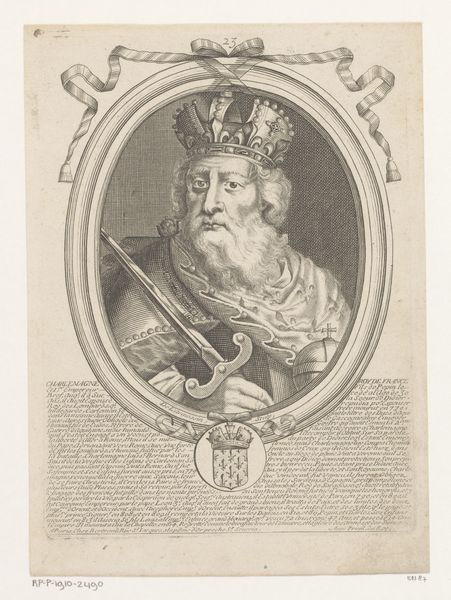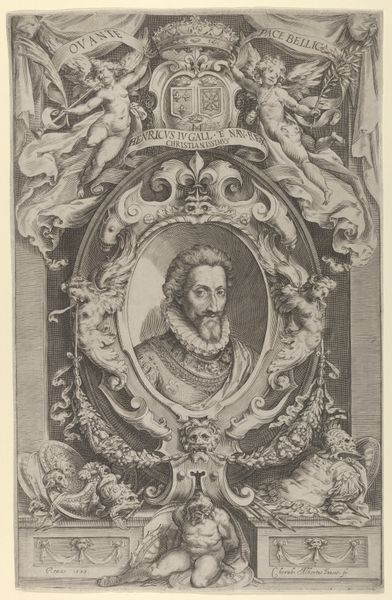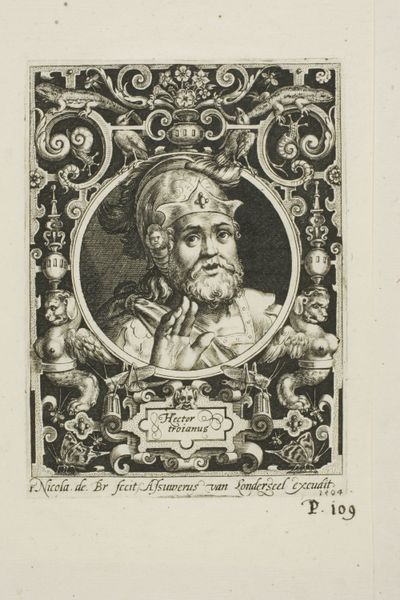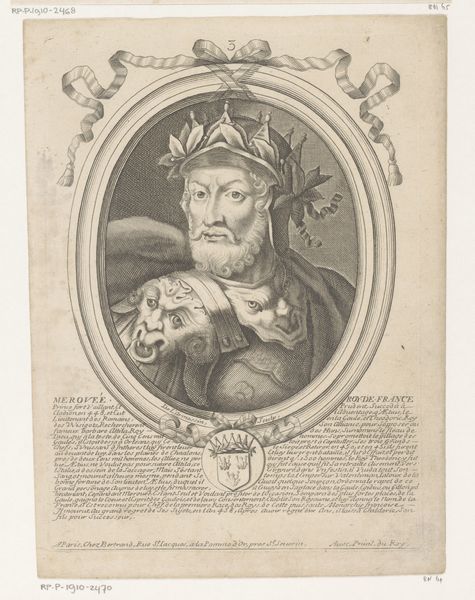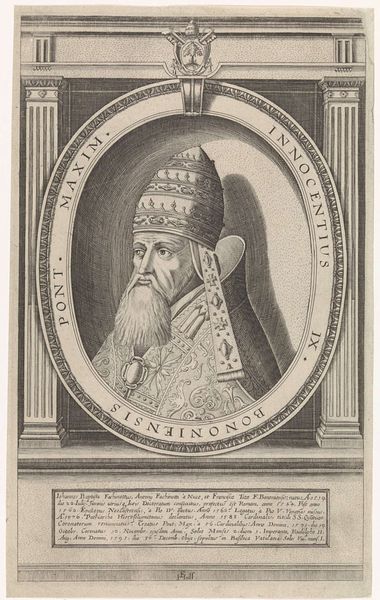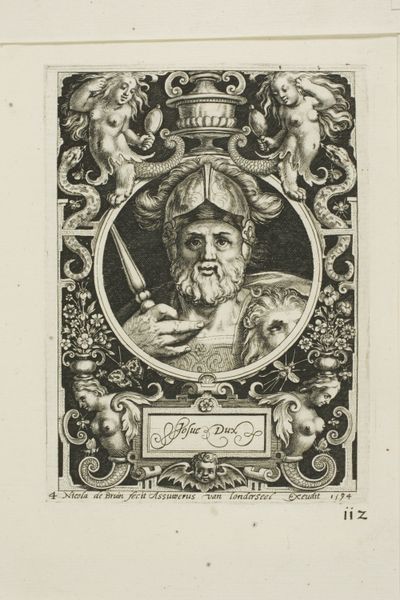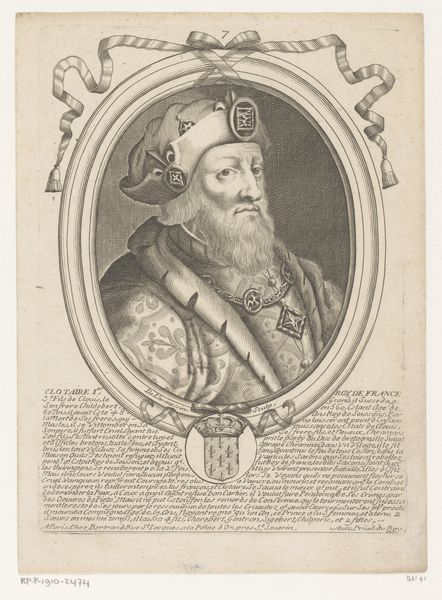
Hector of Troy, plate one from The Nine Worthies c. 1594
0:00
0:00
drawing, print, paper, engraving
#
portrait
#
drawing
# print
#
mannerism
#
paper
#
history-painting
#
remaining negative space
#
engraving
Dimensions: 117 × 88 mm (image); 124 × 91 mm (plate); 148 × 112 mm (sheet)
Copyright: Public Domain
Editor: This engraving, “Hector of Troy, plate one from The Nine Worthies” by Nicolaes de Bruyn, dates to around 1594. It’s intriguing how much detail he packed into such a small work on paper. I'm curious; what strikes you about this portrait? Curator: Well, first off, consider the socio-economic implications of producing this image. Engraving demanded skilled labor. The artist isn’t just depicting Hector, but showcasing their own mastery of a demanding and valuable craft. Who had access to these images and what did that signal in terms of class? Editor: That’s interesting, it implies this image was a luxury good. But what about Hector himself? Curator: Forget Hector for a moment! Let's look closer. What kind of paper did de Bruyn use? Where did he get it? How was it processed? These details inform the image and how it was consumed at the time. Editor: So, it's less about Hector's heroic status and more about...the economics of image production? Curator: Exactly. Consider the "Nine Worthies" series. It's about power, sure, but also about the labor involved in *representing* power, and how this labor interacts with burgeoning capitalist markets for prints. Who was purchasing these prints, and what did that purchase symbolize for them? It could signal intelligence, political view and worldliness, right? It is worth pondering how a market stimulates labor to make new artistic mediums as objects for commercial investment, reflecting the burgeoning mercantile economy and its reach. Editor: I hadn’t considered that before! It makes you see the image in a totally new light—beyond just the historical figure represented. Curator: Precisely. Art doesn't exist in a vacuum. This print encapsulates so many elements of labor, skill and consumption. We now know so much more!
Comments
No comments
Be the first to comment and join the conversation on the ultimate creative platform.
